ARME DE DEFENSE - SPORT DE COMBAT
Maurice Sarry
1987
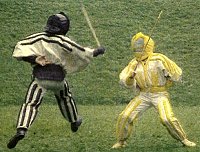
This book offers an introduction to the practice of La Canne by the president of the "Comite Nationale de Canne et Baton". Despite the title, the book almost exclusively focuses on Canne as a competition sport. The introduction gives a short historical overview. After that the book is divided in a basic techniques section, an advanced technique section, and a section on training and competition. The explanations are easy to follow and the pictures and drawings are clear.

La Canne uses large circular strikes as its main technique. The primary competition targets are the head, torso and legs above or below the knees. Strikes to the neck, throat, groin or armed hand ar forbidden, as are stabs and handle strikes (coup de manchette). From this picture of an actual weapon, it would seem to me the designer didn't share this disregard for the stab, but that these techniques were removed from the sport for safety reasons:

The basic stance is as follows. The Canne can be manipulated with either hand. Basic movements of the feet are pretty standard.
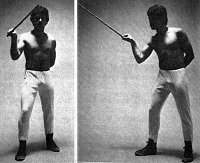
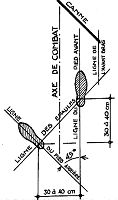
These are the basic strikes strikes. Due to the relatively light weight of the weapon, big movements are essential:
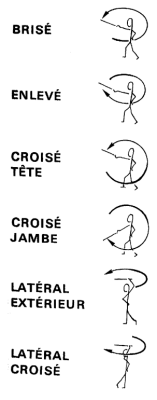
The strikes are either horizontal or vertical.
The basic defences are parry (parer) and body movement (esquiver). These are the parries:

It is important to parry as close to the body as safely possible, and so the strike is deflected towards the tip of the cane.
The following are the evasive movements:
 lifting
the leg, withdrawing the foot, jumping and ducking.
lifting
the leg, withdrawing the foot, jumping and ducking.
Another important technique is the counter attack (riposte), from a parry the body is moved (most often by twisting the hips) to allow an immediate counterstrike (an example):
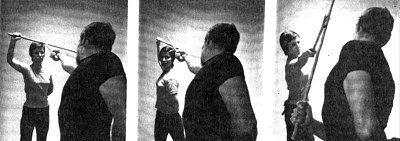
The basic techniques are of course effective only in combinations (enchainements) of which various series are given in the book. These include lunges, feints and set-ups. An advanced technique to surprise the opponent is the changing of hands, allowing delivery of a strike from the unexpected side:
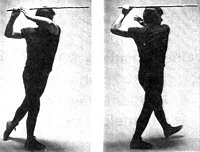
The section on training discusses the four aspects that should be adressed in preparation for competition: these are the physiological aspect, the technical aspect, the tactical aspect and the psychological aspect. The book concludes by brushing on some of the deeper aspects of traditional training. Apparently most schools had some kind of secret principles, motto's, geometrical designs and such that were only revealed to fully initiated members of the brotherhood. The author says he thinks he has started to grasp the meaning of his own secret (le secret de la rose couverte) but it can not be explained in words, only experienced through training.
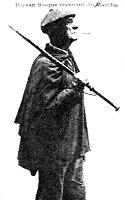
My opinion: I found this book interesting and well organised. Though I am not a practitioner of la Canne, I suppose this book contains useful material for both beginner and advanced students. The author claims not to have written anything new, but to have made a systematic synthesis of previous works, based on his personal experience. The book is well written and the illustrations and technical explanations are on par with the better martial arts books I have encountered. I do regret the exclusive emphasis on the sport aspect of la Canne, and the absence of information on the historical evolution of the techniques.
This is a French site on Canne de Combat with some additional information.
Eli Steenput. 27/05/1998
